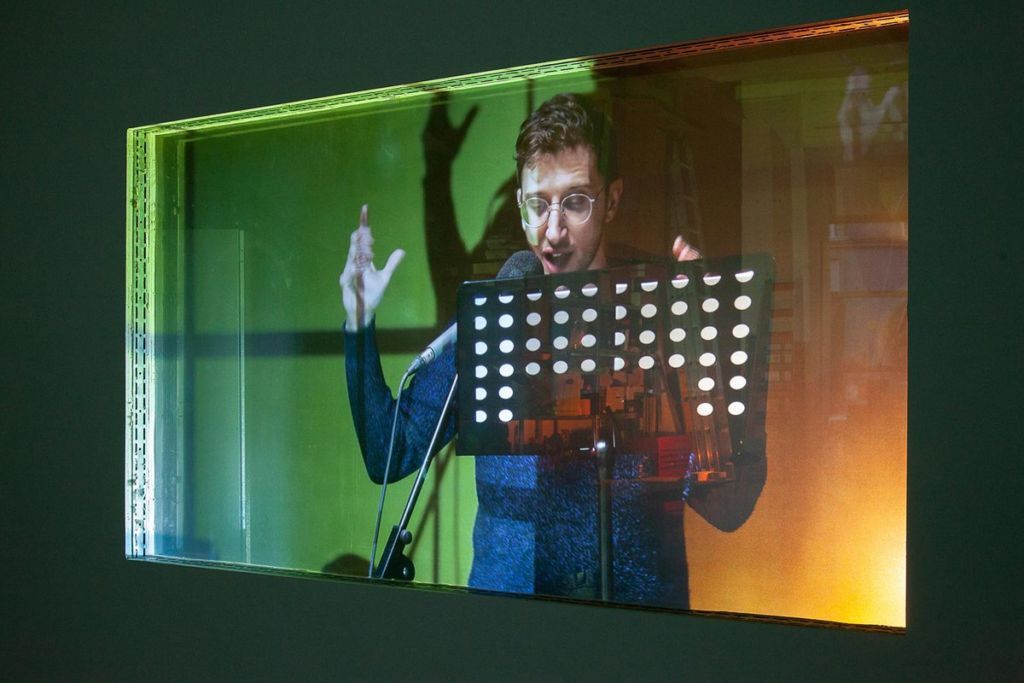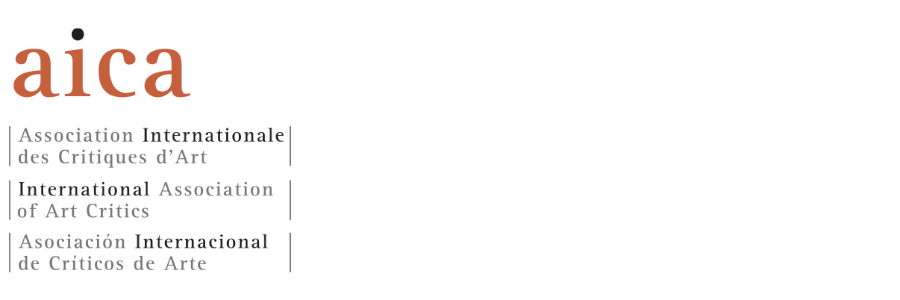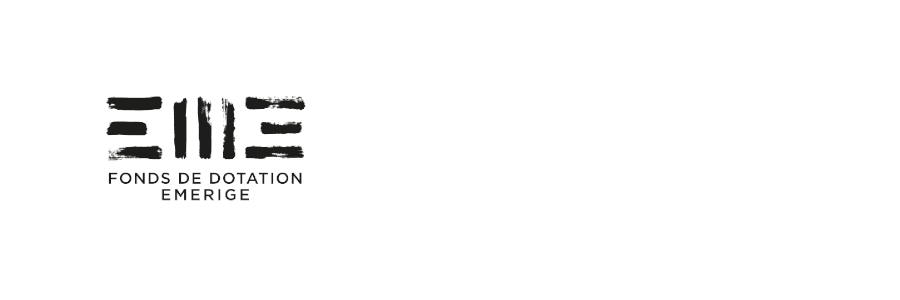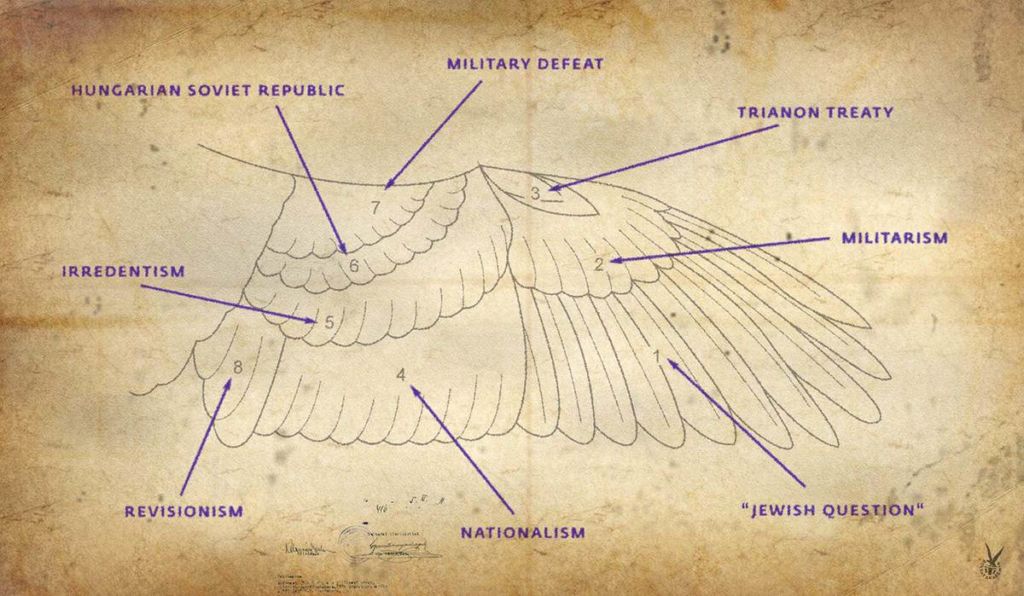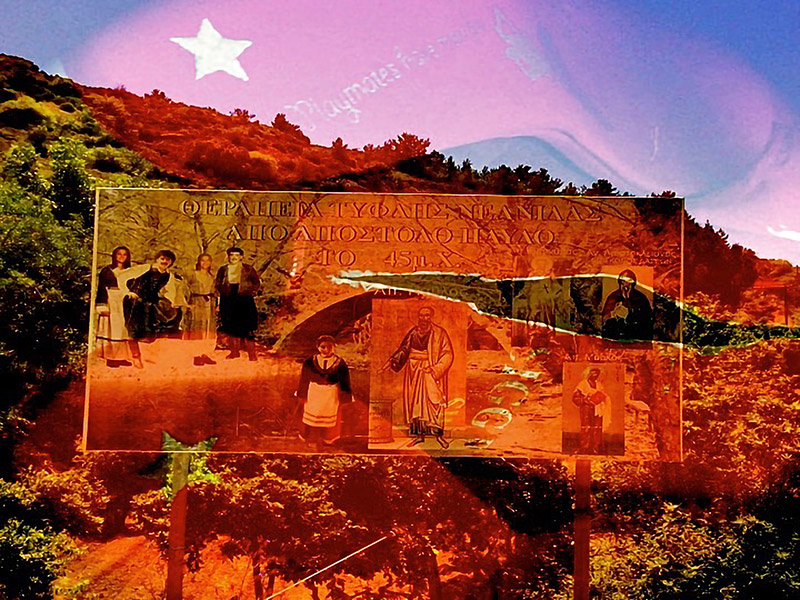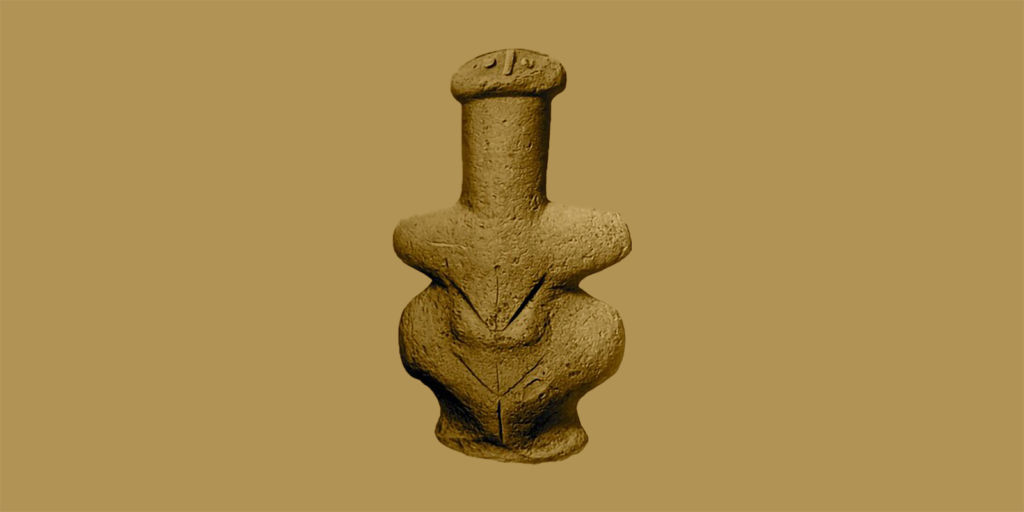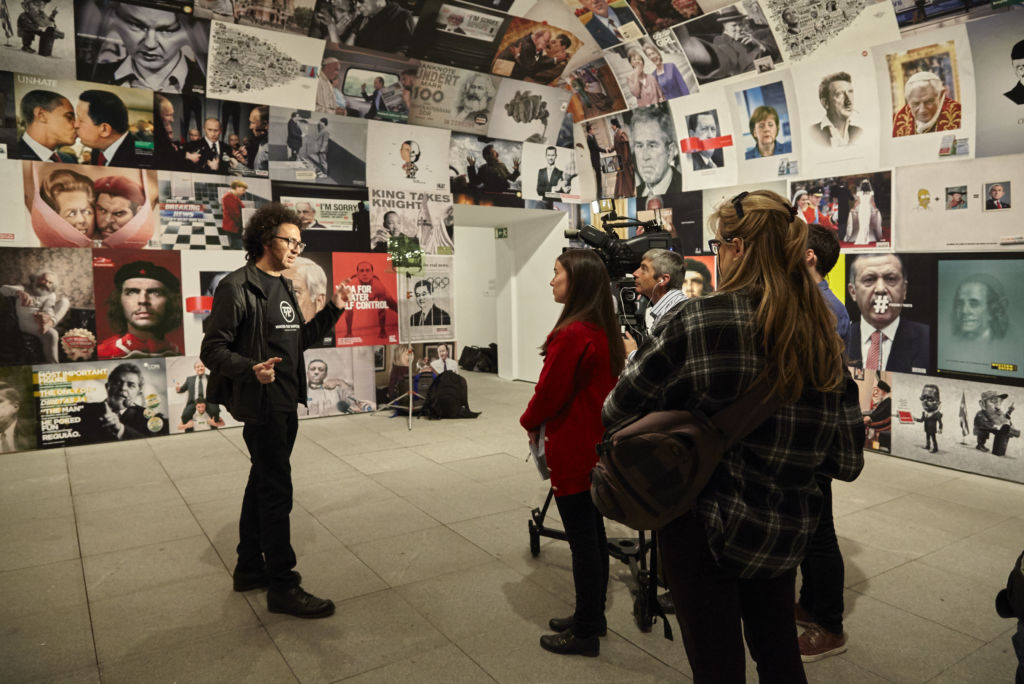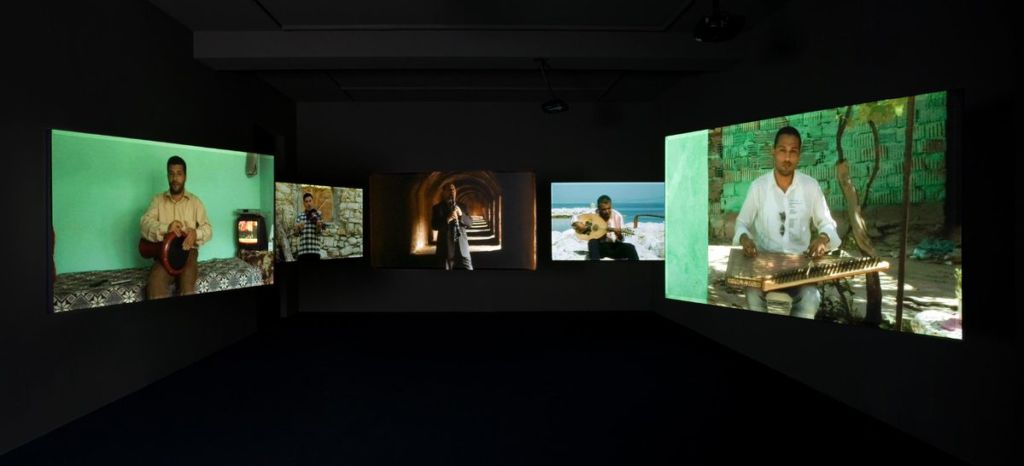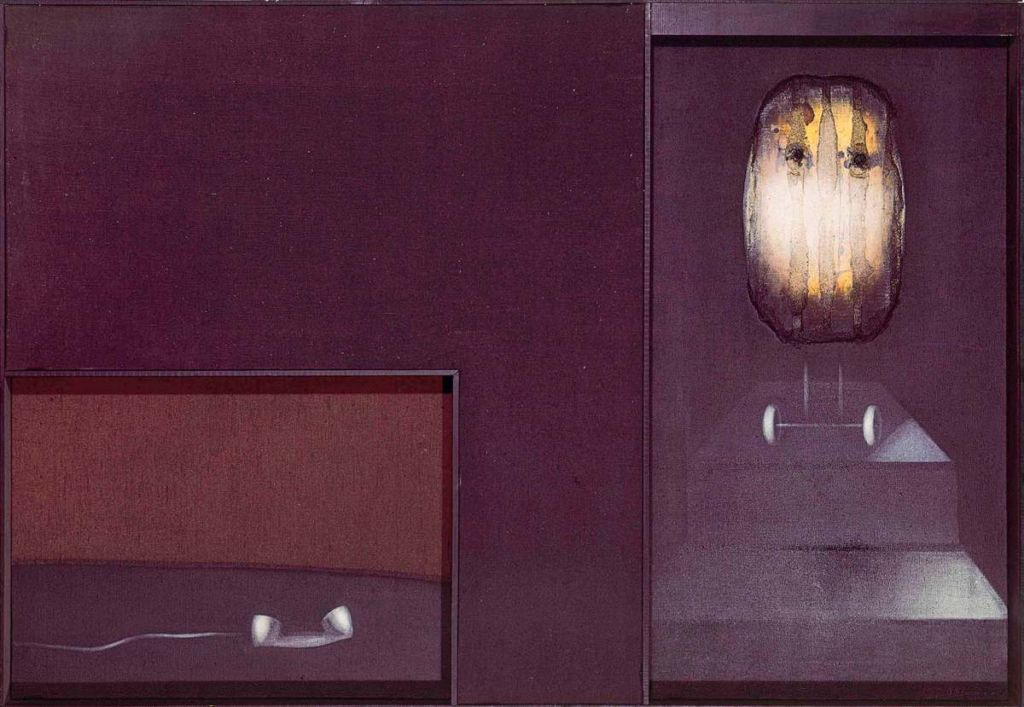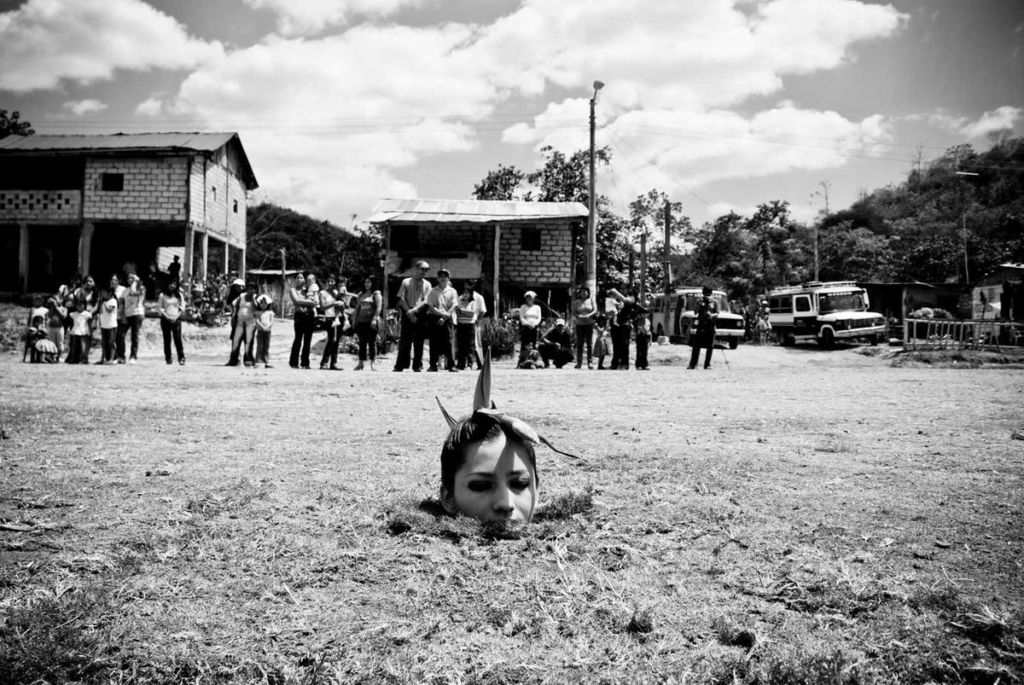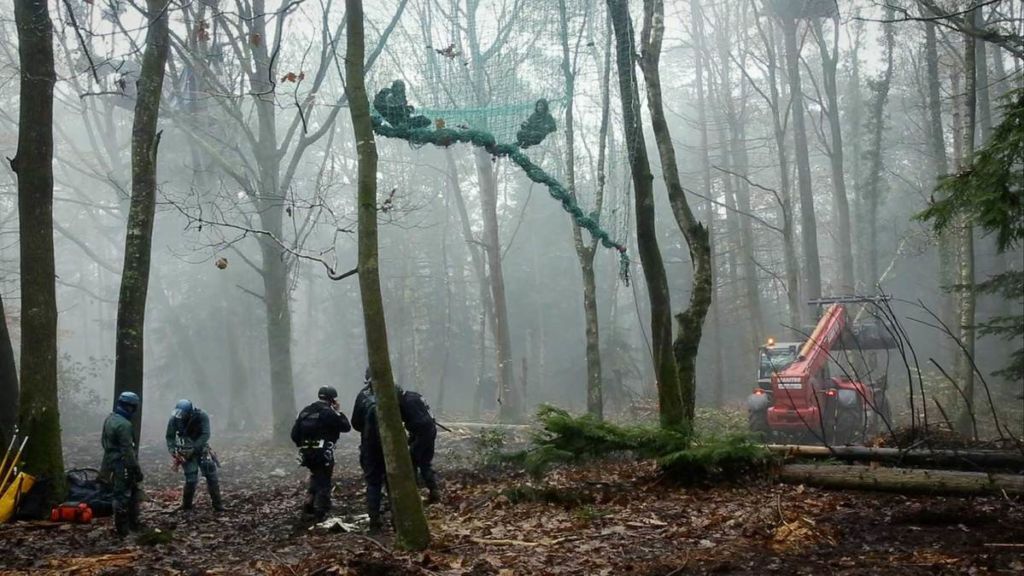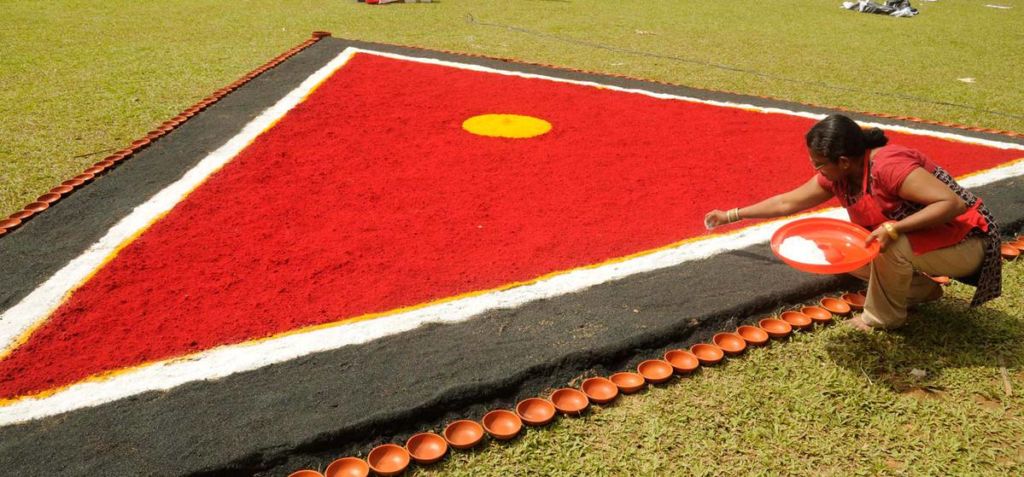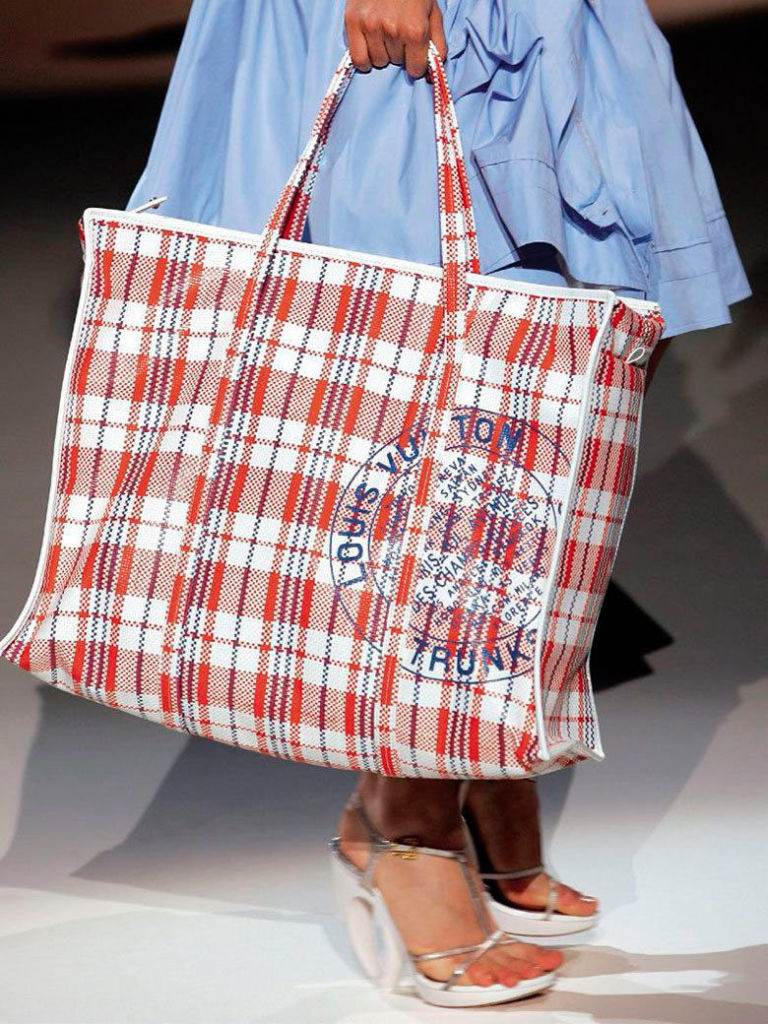Lawrence Abu Hamdan’s work shows how sound devices are liable to condition individuals and establish power relationships. Sounds, noises and voices are part of what can be called “sound modernity” that the artist submits to a critical gaze. From this perspective, the artist shows true commitment. Yet, by focusing on specific situations, by adopting a position that is both specific and partial, his approach is not quite comparable to that of the so-called “engaged” artist, who asserts a position and delivers messages, nor to that of the “universal” intellectual, who speaks in the name of all.
Modernity has granted a kind of privilege to images and the sense of vision by emphasizing their effects on human behaviour. Visual objects are often perceived in terms of their persuasive power and ideological impact. Conversely, there have been fewer studies on the role of auditory, acoustic or verbal exchanges, as their capacity to shape the relationship between institution and individual is probably still underestimated. Like the phonograph, the telephone and the radio, inventions that significantly altered everyday experience at the turn of the 20th century, listening techniques are part of what Canadian researcher Jonathan Sterne calls “sound modernity,” the historical moment when sound reproduction technologies began to play a role in the “maelstrom” of modern life1 and the shaping of power relations.
Born in Jordan in 1985, Lawrence Abu Hamdan has developed a composite work in terms of language and forms of intervention, aimed at revealing the social, cultural or political contradictions at play in listening techniques. Based on an analysis of facts perceived as unfair or suspicious, he also draws on the idea that the free flow of information promotes the proper functioning of a democracy, especially nowadays, when information is moulded to influence public opinion through the media and social networks.
Amplifying the sound of footsteps
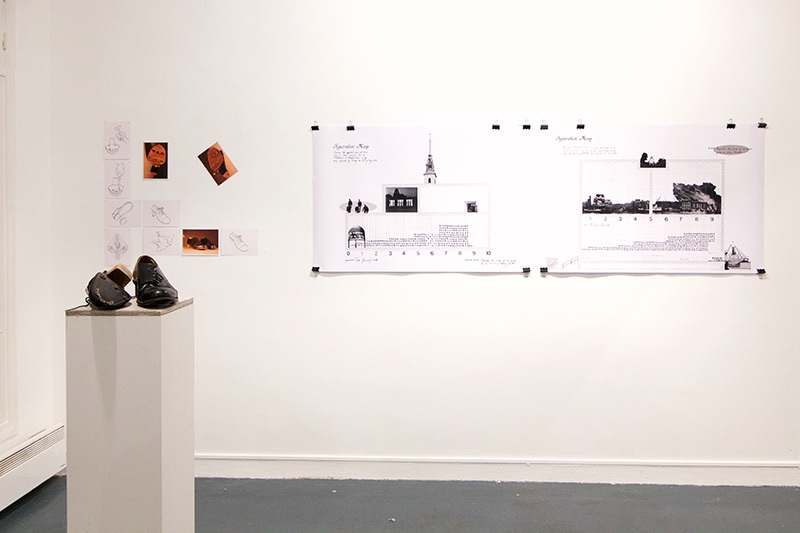
Lawrence Abu Hamdan, Marches, 2005-2008. Exhibition view, Concrete cities. Courtesy of the artist and mor charpentier, Paris, 2016
A political dimension emerges almost systematically when sound devices are implemented in a public or collective setting. Marches (2005), for example, stages choreographed routes through European cities (Glasgow, Lisbon, London). They are performed by a dozen people wearing shoes specially designed to amplify the sound of their footsteps. This amplification is enhanced by the choice of location: domed ceilings, halls, canopies or narrow corridors. The aim is to maximise the sonic effect in order to explore the interaction between sound perception and the urban environment. But the sites are also chosen for their cultural and political heritage, their historical peculiarities, having already hosted comparable marches in the past. Collective marches are often motivated by protest, as in the case of demonstrations. Shouting slogans, sounding sirens, banging pots and pans and chanting songs of resistance are ways of challenging those in power and voicing demands. Conversely, other marches are held in silence to maintain a sense of solemnity. In either case, the march is a way of being “heard”. Marches can also evoke a military parade, not least because the boots resonate in a rhythmic manner.
The video The All Hearing (2014), on the other hand, evokes hearing damage and noise pollution in the streets of Cairo. Used for Friday’s religious sermons, the loudspeakers that saturate the city’s streets broadcast sermons whose themes are set each week by the Egyptian government. They thus act as a relay for the diffusion of power. The video follows two Cairo imams who are sensitive to noise pollution. At the artist’s request, the imams decide to make it the subject of their weekly sermon, despite government injunctions. Their discourse is superimposed here on the urban tumult, which it adds to, mixing the call for quietness with the general hubbub. But words are used here to combat other words, and the loudspeakers are no longer tools of propaganda but of expression.
This ambivalence is also perceptible in A Convention of Tiny Movements (2015), a large photograph based on a discovery made a few years ago by a group of computer scientists at the Massachusetts Institute of Technology (M.I.T). When a voice is projected from the mouth into the air it hits nearby objects causing tiny vibrations on their surfaces. By filming these with high-speed cameras, the researchers recorded the vibrations and picked up the sounds that were produced, thereby transforming many everyday objects, such as a packet of crisps, a glass of water, a potted plant and a box of tissues into a listening device, or what they call visual microphones.
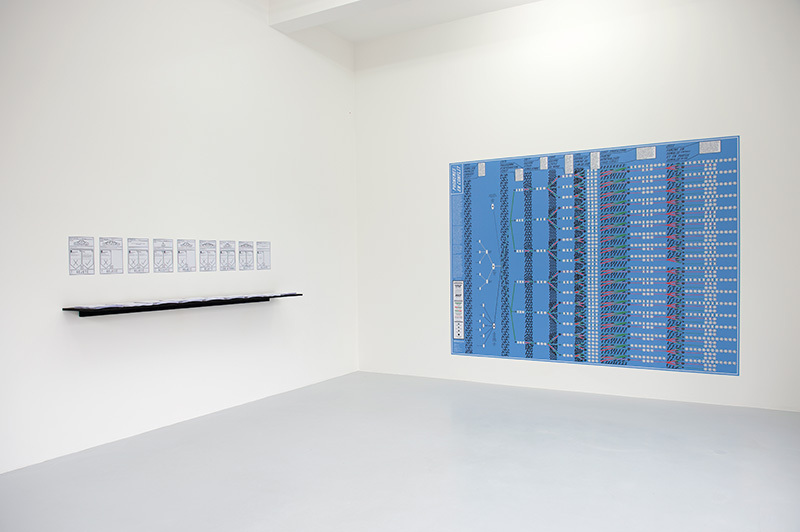
Lawrence Abu Hamdan, Conflicted Phonemes, 2012. Exhibition view, Grand Café Saint-Nazaire, 2016. Courtesy of the artist and mor charpentier ©Marc Domage
Although this technology has not yet been implemented by the NSA, the GCHQ and other espionage agencies, the enlarged photograph is an index of all the objects (shown in colour) that can, to date, be successfully used as sound recording devices. Conversely, the black and white sections function as a map revealing all the objects that cannot yet be used as microphones, thus showing the blind spots or silent points of the technology. The objects in colour are capable of listening to you and recording your voice, but they will never provide crystal-clear sound reproduction quality. For the inventors of this technology, the most puzzling and intriguing part of the discovery is the texture that each object adds to a recording and which they consider to be their individual voice.
Lie detectors
The three works produced in 2012 The Whole Truth, The Freedom of Speech Itself and Conflicted Phonemes form “The Trilogy of Truth”.2
The Whole Truth is an audio documentary that examines the use of lie detectors by some European governments, border agents or insurance companies. These notorious detectors, which are part of the espionage legend, work on the principle that there is less blood flow to the vocal cords of someone who is lying. The detector then measures the resulting tonal variations and classifies them in order to assess the subject’s sincerity. Of course, objects are used to measure anxiety-related symptoms as part of a stress-inducing exercise. The Whole Truth adopts the style of a radio programme to present recordings of a series of interviews with a software developer, an anthropologist, an entrepreneur and a representative of the biometrics industry who are questioned about the roles and implications of the voice, asserting their expertise in the field. At the same time, they are subjected to lie detectors. The listener of the recordings can consult in real time the graphs that vary according to what is being said. The irony lies in the idea that authoritative individuals, in terms of the role of the voice in the age of artificial intelligence, should be subjected to lie detectors, especially when the interviews are accompanied by music that is typical of mainstream radio programmes. But Abu Hamdan refrains from making any specific comments or explanations. An element of uncertainty remains. However, the experiment shows that interviewees lie in some cases, showing that the authority of a discourse can be questioned, that “experts” produce statements presumed to be true, and that voice lie detectors are unproductive since the curves vary endlessly, regardless of the content of the statements being made.
The 30-minute audio documentary, The Freedom of Speech Itself, based on courtroom proceedings, uses voice analysis conducted by the UK Immigration Service to assess the authenticity of asylum seekers’ accents. Depending on the intonations and modulations of the voice, some applications fail because they are not considered to be natives of one of the countries qualified to apply. This sorting technique leads to errors because accents vary greatly according to ethnic specificities, which are extremely porous between the borders of many countries in Africa and elsewhere. The film reveals an incompatibility between a rigid structural order, that of legal systems whose essential characteristic is to conform to norms and apply prescriptions, and the complexity of the languages that permeate civilisations.
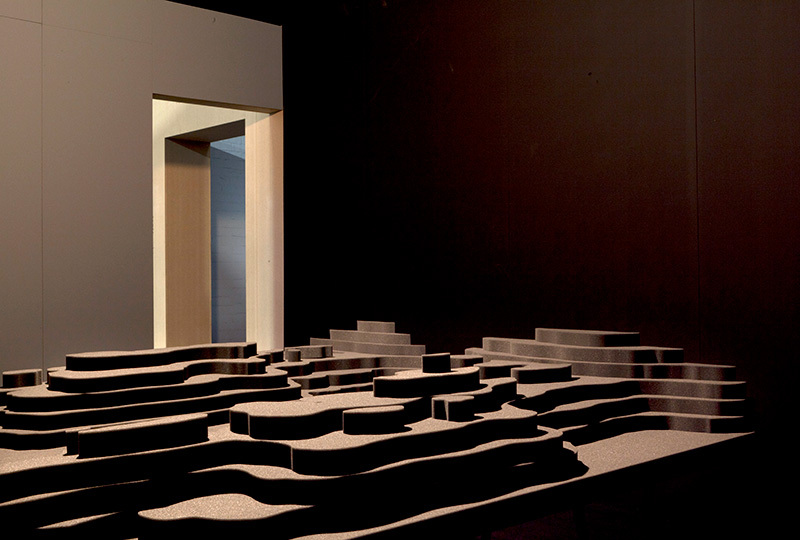
Lawrence Abu Hamdan, Freedom of Speech Itself, 2012. Exhibition view, Extra City Antwerp. Courtesy of the artist and mor charpentier
The Freedom of Speech Itself also insists on a visual dimension. The character of what is irreducible in everyone is accentuated by sculptural installations that consist of a three-dimensional representation of the vocal impressions of two people each pronouncing the word “you”, a representation that plays on the frequency and amplitude of the two voices. The result is a pattern resembling topographical maps showing relief and differences in height. Abu Hamdan thus represents an association between voice and territory, and the differences in height, when seen from above, suggest fingerprints in the context of an investigation or in the field of cryptography, recalling the singularity of each individual.
Ethnic and geographical origins of a language
The project Conflicted Phonemes intervenes more directly with the actors concerned. The work is the result of discussions among a group of twelve Somali asylum seekers, linguists, researchers and activists at a conference in Utrecht in 2012 on the controversial use of language analysis techniques with asylum seekers. The artist was present. In this case, Somali asylum seekers, whose language, dialects and accents were also analysed by means of voice recordings, could not be processed by the Dutch immigration authorities because they were unable to determine their precise ethnicity and geographical origin. Conflicted Phonemes focuses more broadly on the interbreeding of languages and dialects in this region of the Horn of Africa by presenting a series of flow charts. Like “nongeographic maps”3 , most of the documents are small in size, representing the tests to which the asylum seekers have been subjected. Another large-format document mixes text and visual information in a chronological development, presenting the processes of language and community mixing in the form of a frieze. It shows that in 1973, date of the adoption of Somali as a national language by the Somali Democratic Republic, a number of geographically dispersed ethnic groups were invited to adopt this language as part of a forced integration programme. The different groups are still, at this stage, relatively autonomous. As a result of the conflicts and food crises that have marked the history of the country over the past forty years, identities and dialects have become increasingly complex. This is the result of the many population displacements caused by wars and famines.
In other words, the main map displays a visual cacophony that suggests that it would be hazardous to determine the exact ethnic and geographical origins of a language. This density is explained, on one hand, by the complexity of the situation and, on the other, by the impossibility of identifying an individual simply by associating him or her with a fixed location. Abu Hamdan adds that it is “meant to offer the rejected/ silenced asylum seeker an alternative and non-vocal mode of contestation.”4
However, the nature of what is said in this trilogy is sometimes overlooked: the exchanges with experts in The Whole Truth are not necessarily featured; The Freedom of Speech Itself is based on two material representations of the word ‘You’, which is relatively banal, while Conflicted Phonemes does not insist on what the voice recordings actually say. It seems that what matters here is the gesture of listening, rather than saying.
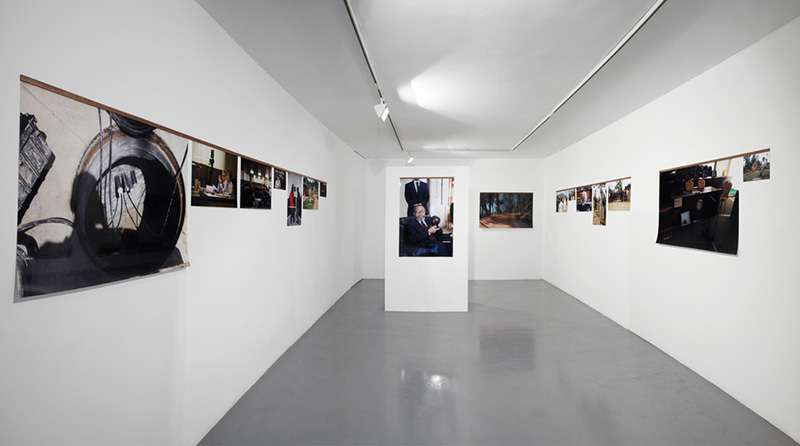
Lawrence Abu Hamdan, Model-Court, 2013. Courtesy of the artist and mor charpentier
In 2013, The Freedom of Speech Itself and Conflicted Phonemes were used as evidence at a session of the UK Asylum and Immigration Tribunal where it was used as an expert testimony at a hearing to discuss deportation. His sound analyses have been used on several occasions in judicial investigations and in advocacy work for organisations such as Amnesty International. The artist has also been part of the No More Forgotten Lives campaign for Defence for Children International. His audio analysis is carried out as part of his research at the Forensic Architecture Laboratory at Goldsmiths College in London, where he has also completed a thesis to further his research. The fact of having presented his work to a judge and an institution implies that it is comparable to a file compiling documents, exhibits and evidence.5 This approach suggests a critical intention that is addressed to everyone, including those who apply the law. It also shows that this kind of project is intended to inform, perhaps even to concern all parties, rather than to make binary distinctions with victims on one side and perpetrators on the other.
Concrete problems
This closeness to the field, the fact of going to meet the people likely to intervene in the course of things, reflects the desire not to judge or accuse. The works remain relatively open to interpretation, they don’t deliver targeted messages. More broadly speaking, Abu Hamdan intervenes by rejecting any position from above, by not claiming to speak for others, but by making their words available through consultation with specialists from other fields, or by soliciting representatives of the institution. This is undoubtedly what makes it possible to acquire a “more concrete and immediate awareness of struggles”6 , in accordance with the figure of the specific intellectual defended by Michel Foucault in 1976, when he drew a distinction with the humanist and universal intellectual, “master of truth and justice”.7 For Foucault, the specific intellectual makes the connection between one’s knowledge and the institution, relies on in-depth knowledge rather than humanistic morality, and focuses on concrete problems. Foucault notes, for example, that at the end of the Second World War, a period which characterises the development of this new figure of the specific intellectual, the latter is pursued by political powers, no longer because of the discourse he holds, but because of the knowledge he possesses.
This notion is undoubtedly found in Abu Hamdan’s work, insofar as it is not necessarily the messages and words that characterise his approach, but the expression of specific knowledge. While the latter may not have the consistency of scientific laws, its content nevertheless sheds light on a global framework, that of our modernity, through the many situations examined. This type of knowledge also comes into play in a concrete way, not in a theoretical way, because the artist has to account for human or institutional activities by focusing on specific cases, based on extensive documentary research.
Truth can be produced or manipulated
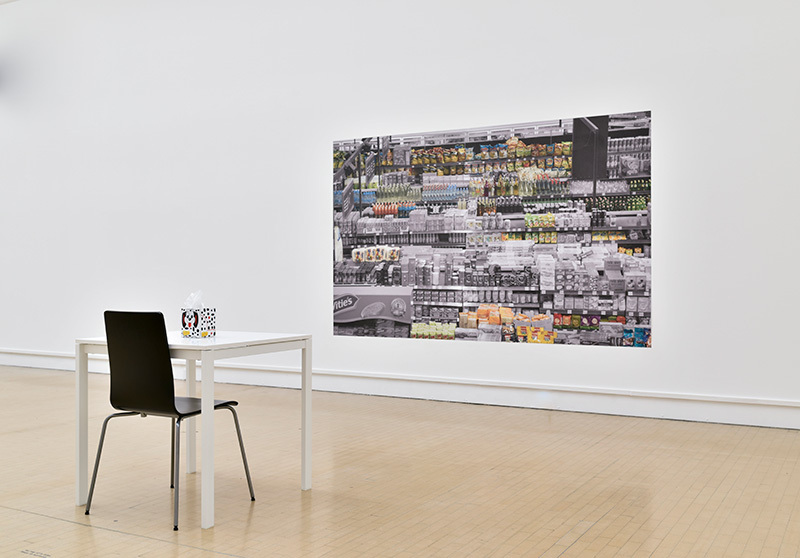
Lawrence Abu Hamdan, A Convention of Tiny Movements, 2015. Exhibition view, British Art Show 8, 2015-2017 © Chris Park
Two aspects can then be highlighted. Firstly, the “knowledge” summoned by Abu Hamdan is based on open, non-assertive proposals, or those whose meaning is enriched over time. Perhaps it is a specificity of art and artists to produce discourses that, rather than imposing, suggest and connect. The recurrent use of mapping devices takes this course, insofar as this type of representation requires a work of interpretation that is not immediate; it calls for pathways and connections, and requires a phase of adaptation, of deciphering, as we see with Conflicted Phonemes. Compared to academic or scientific disciplines, this type of experience may give the impression of being relative. But this does not mean it is devoid of legitimacy. It has an active, dynamic dimension, for those who emit it, but also for those who receive it, hence perhaps its truly critical scope. Moreover, the fact that such a discourse does not possess ‘truth’ in itself makes sense, because Abu Hamdan also seeks to show that a notion of truth can be produced or manipulated by scientific, legal or political institutions, and that it is variously disseminated in society. In other words, Abu Hamdan is making a discourse “about discourses”, using an approach that can set aside the arbitrary or affirmative dimension, thus taking care not to reproduce what he questions.
Secondly, while Abu Hamdan’s position as a specific intellectual testifies to his commitment, we must not be too hasty in assimilating him to so-called “committed” art. The artist’s forms of intervention shift away from a set of elements representative of committed art, such as the driving nature of activism in art, the subversive element of certain messages or the proposal of an alternative vision. Once again, Abu Hamdan’s various works prove to be less categorical, or in any case less targeted, as if his aim were to draw attention to systems or modes of operation, rather than to deliver messages. If we need to talk about commitment in Abu Hamdan’s work, it is in the development of a critical discourse which, above all, demonstrates great capacity to listen, especially when it is necessary to express the complexity, paradoxes and contradictions of situations which are sometimes Kafkaesque. Each of the situations described has incongruity, or even a biased and ill-founded dimension that has be made known. The artist’s discourse is always nuanced, his representations are never simple, sometimes they are even a little frustrating visually – which makes sense in work that is about hearing. The real purpose of his research, especially because it is based on legal procedures and perspectives of truth, fairness and freedom, is to strengthen the democratic process. If he succeeds in doing so, it is also because the artist is careful not to speak for us.
Editors: Vincent Simon and Eric Mangion
Translation by Angela Kent
Cover: Lawrence Abu Hamdan, Walled Unwalled, DAAD Berlin 2018 © Jens Ziehe
1.Jonathan Sterne, The Audible Past: Cultural Origins of Sound Reproduction. Durham: Duke University Press, 2003.
2.Formula used by Anders Kreuger in connection with the three works we refer to: Anders Kreuger, Lawrence Abu Hamdan’s Trilogy of Truth, Afteral : A Journal of Art, Context and Enquiry, issue 39 Summer 2015, pp. 60-73. University of Chicago Press
3.In the words of the artist
4.Ibid.
5.It was not possible to find any information about the outcome of these meetings.
6.Michel Foucault, Truth and Power: an interview with Michel Foucault , Sage publications, 1979
7.Ibid.
